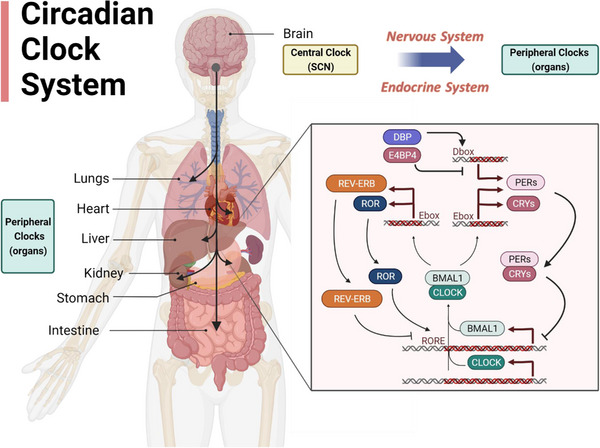FIGURE 1.

The molecular mechanism of the circadian clock system. Circadian clocks are composed of a central clock located in the SCN of the brain and peripheral clocks situated in various peripheral organs (i.e., lung, heart, liver, kidney, stomach, and intestine). Proteins encoded by clock genes CLOCK, BMAL1, CRYs, PERs, REV‐ERB, and ROR interact to create transcription‐translation feedback loops. BMAL1 interacts with CLOCK to form a heterodimer and transcriptionally regulates the expressions of CCGs (CRYs, PERs, ROR, and REV‐ERB) via E‐box. PERs and CRYs proteins accumulate and subsequently inhibit the activity of the BMAL1/CLOCK complex. RORα and REV‐REBα play opposing roles in regulating the transcription of Bmal1 through RORE elements. DBP and E4BP4 also have inverse effects on the transcription of PERs through D‐box elements. BMAL1, Brain and muscle ARNT‐like 1; CCGs, clock‐controlled genes; CLOCK, circadian locomotor output cycles kaput; CRYs, Cryptochromes; DBP, albumin D‐site‐binding protein; E4BP4, E4 promoter‐binding protein 4; PERs, Periods; REV‐ERB, reverse erythroblastosis virus heme receptors; ROR, retinoic acid‐related orphan receptor; RORE, ROR‐responsive element; SCN, suprachiasmatic nucleus.
